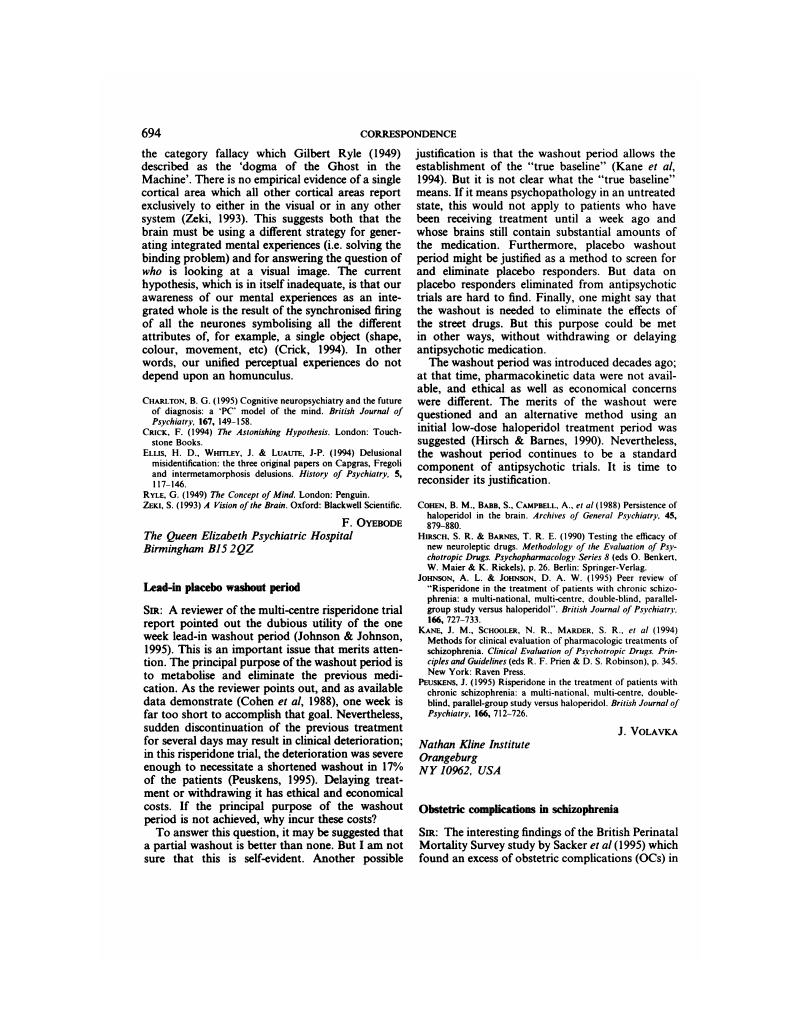No CrossRef data available.
Article contents
Lead-in placebo washout period
Published online by Cambridge University Press: 02 January 2018
Abstract
An abstract is not available for this content so a preview has been provided. As you have access to this content, a full PDF is available via the ‘Save PDF’ action button.

- Type
- Columns
- Information
- Copyright
- Copyright © 1995 The Royal College of Psychiatrists
References
Cohen, B. M., Babb, S., Campbell, A., et al (1988) Persistence of haloperidol in the brain. Archives of General Psychiatry, 45, 879–880.Google Scholar
Hirsch, S. R. & Barnes, T. R. E. (1990) Testing the efficacy of new neuroleptic drugs. Methodology of the Evaluation of Psychotropic Drugs. Psychopharmacology Series 8 (eds Benkert, O., Maier, W. & Rickels, K.), p. 26. Berlin: Springer-Verlag.Google Scholar
Johnson, A. L. & Johnson, D. A. W. (1995) Peer review of “Risperidone in the treatment of patients with chronic schizophrenia: a multi-national, multi-centre, double-blind, parallel-group study versus haloperidol”. British Journal of Psychiatry, 166, 727–733.Google Scholar
Kane, J. M., Schooler, N. R., Marder, S. R., et al (1994) Methods for clinical evaluation of pharmacologic treatments of schizophrenia. Clinical Evaluation of Psychotropic Drugs. Principles and Guidelines (eds Prien, R. F. & Robinson, D. S.), p. 345. New York: Raven Press.Google Scholar
Peuskens, J. (1995) Risperidone in the treatment of patients with chronic schizophrenia: a multi-national, multi-centre, double-blind, parallel-group study versus haloperidol. British Journal of Psychiatry, 166, 712–726.Google Scholar



eLetters
No eLetters have been published for this article.